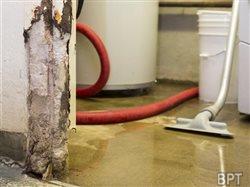5 simple tips to prepare your home for flood season
(BPT) - After a winter of frigid temperatures and record snowfalls, the nation now faces the spring thaw and long, rainy months. Flood season is officially here – is your home ready for it?
Floods are the most common natural disaster in the United States. Over the past five years, the average flood insurance claim was more than $35,000, according to FEMA.gov. If you or someone you know has ever experienced a flood, you know that cleanup can require a massive effort.
The best defense against flooding is a proactive approach. Consider these flood tips to prepare your home and family for flood season:
1. Get a shop vac
Every home that is susceptible to water and moisture should have a reliable shop vac. This type of vacuum sucks up water quickly and efficiently. Keep in mind, flood cleanup must be done quickly within the first 48 hours to avoid mold growth and extensive property damage.
2. Test your sump pump
Take the time now to test your sump pump. Simply lift the float on the side of the pump and listen for the pump to turn on; that noise indicates your pump is working correctly. Next, install a water alarm that will let you know if water is accumulating in your basement. An alarm like AdvanTEXT from WAYNE Pumps sends text messages to up to three people in the event of power outages or high water levels. If you are away from home or even out of town, you can take immediate action to protect your property, rather than unknowingly coming home to a flooded basement. Visit www.waynepumps.com/preventflooding for more information.
3. Seal cracks
Seal the cracks in the basement floor and foundation to prevent water seepage when the water table gets too high. Similarly, if you have concrete walls, be sure to seal those cracks as well. This is a simple DIY task that can be done using a variety of affordable sealant materials available at home improvement stores.
4. Prepare and protect
Irreplaceable items and heirlooms should always be kept on high shelving. Additionally, keep important documents in a safe place like a waterproof container. If you live in a flood-prone area, consider raising electrical sockets, fuse boxes and wiring 12 inches or more above the flood elevation. Finally, make sure gutters and downspouts are clear of debris so water can flow freely away from your home.
5. Update insurance
Homeowners and renters insurance typically do not cover losses due to flooding. You must purchase additional insurance or riders specific to flood coverage, if available to you, in order to protect your property from this type of water damage. Call your insurance agent today to discuss options, and keep in mind it typically takes 30 days after the purchase of flood insurance before it goes into effect.
In addition to preparing your home against floods, it’s smart to prepare your family as well. Make sure all members know how to react to water within the house. For homes with the AdvanTEXT alarm system, make sure those who receive text warnings communicate with each other and have a plan for checking the home and cleaning up excess water, if necessary, before it damages the property.























